 W
WMoorish Revival or Neo-Moorish is one of the exotic revival architectural styles that were adopted by architects of Europe and the Americas in the wake of the Romanticist fascination with all things oriental. It reached the height of its popularity after the mid-19th century, part of a widening vocabulary of articulated decorative ornament drawn from historical sources beyond familiar classical and Gothic modes. Neo-Moorish architecture drew on elements from classic Moorish architecture and, to some extent, from wider Islamic architecture.
 W
WThe Archbishop's Palace of Lima, the capital of Peru, is the residence of the Archbishop of Lima, and the administrative headquarters of the Roman Catholic Archdiocese of Lima. It is located on the Plaza Mayor of Lima, in the Historic Centre of Lima.
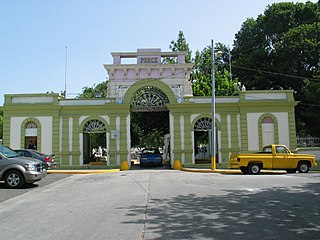 W
WCementerio Civil de Ponce, a.k.a., Cementerio Municipal de Ponce, is a historic burial ground in Ponce, Puerto Rico. It was founded in 1901. It was designed by Manuel V. Domenech. Some of the people buried at Cementerio Civil include Ruth Fernández, Isabel la Negra and Héctor Lavoe. It is believed to be the largest cemetery in Puerto Rico.
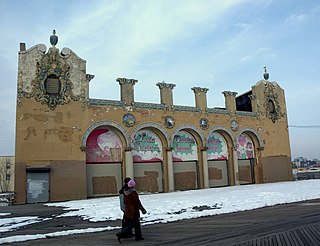 W
WThe Childs Restaurants building is a New York City designated landmark on the Riegelmann Boardwalk at West 21st Street in Coney Island, Brooklyn, New York City. It was completed in 1923 for Childs Restaurants, an early restaurant chain and one of the largest in the United States at that time. It was designed in a "resort style with Spanish Revival influence" with colorful exterior terra cotta ornamentation that references its seaside location, with depictions of Poseidon, sailing ships, and sea creatures. It was a very large restaurant, with three stories and a roof garden.
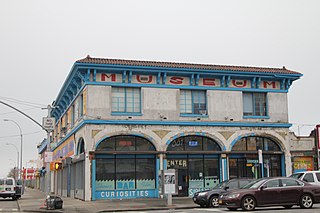 W
WThe Childs Restaurant Building on Surf Avenue is a New York City designated landmark on Surf Avenue at West 12th Street in Coney Island, Brooklyn. It was completed in 1917 for Childs Restaurants, an early restaurant chain and one of the largest in the United States at that time. Its design, by John Westervelt, Childs' in-house architect, shows "elements of the Spanish Revival style." The company built a much larger Childs location on the Coney Island Boardwalk in 1923, but continued to operate the Surf Avenue location until 1943.
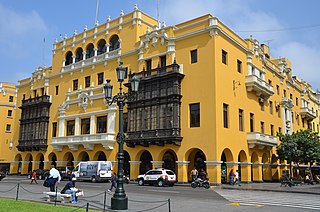 W
WThe Club de la Unión is a non-profit Peruvian civil association which was founded on October 10, 1868. Its founders include such notable historical figures such as admiral Miguel Grau, colonel Alfonso Ugarte, and colonel Francisco Bolognesi, many of which would later go on to serve in the Peruvian military during the War of the Pacific.
 W
WThe Granada Theatre is a theatre in Sherbrooke, Quebec, Canada.
 W
WThe Palacio de Correos de México also known as the "Correo Mayor" is located in the historic center of Mexico City, on the Eje Central near the Palacio de Bellas Artes. It was built in 1907, when the Post Office here became a separate government entity. Its design and construction was the most modern of the time, including a very eclectic style mixing several different traditions mainly Neo-Plateresque into a very complex design. In the 1950s, the building was modified in a way that caused stress and damage, so when the 1985 earthquake struck Mexico City, this building was heavily damaged. In the 1990s, restoration work has brought the building back to original construction and appearance.
 W
WThe Palacio Municipal de Lima or City Hall of Lima is a public building that serves as headquarters of the Metropolitan Municipality of Lima. It is located on the street Portal de Escribanos, block 3 of Jirón de la Unión, and in front of the Plaza Mayor of Lima's historic centre.
 W
WThe Panteón Nacional Román Baldorioty de Castro is a tract of land in Barrio Segundo of the city of Ponce, Puerto Rico, originally designed as the city's cemetery, but later converted into what has come to be a famous burial place. Established in 1842, it is Puerto Rico's first national pantheon. It is the only cemetery dedicated as a museum in Puerto Rico and the Caribbean. Prior to being dedicated as a Panteón Nacional, it was known as Cementerio Viejo or as Cementerio Antiguo de Ponce, and is listed under that name on the U.S. National Register of Historic Places. The Pantheon is named after Román Baldorioty de Castro, a prolific Puerto Rican politician, and firm believer of Puerto Rican autonomy and independence. His remains are located here. The Pantheon also houses a small museum about the history of autonomism in the Island, and it is currently used both as a park and a venue for the expression of culture and the arts. It is called the Museo del Autonomismo Puertorriqueño.
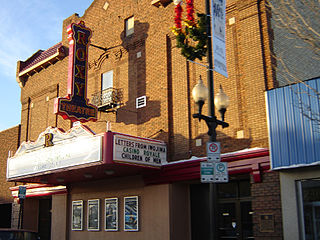 W
WThe Roxy Theatre is a movie theatre (cinema) located in the Riversdale neighborhood of Saskatoon, Saskatchewan, Canada. Built during the onset of the Great Depression. The interior was decorated in a Spanish Villa style with the walls covered with small balconies, windows and towers that gave the impression of quaint Spanish village. The ceiling was painted in an atmospheric-style to give the impression of the night sky. The Roxy was the first building in Saskatoon with air conditioning. It was built for sound pictures. The New York Roxy, largest cinema ever built in North America named after its manager noted radio personality and impresario "Roxy" Rothafel, spawned hundreds of unrelated theatres across North America named Roxy, since the word came to mean the latest and best in showmanship. Rothstein Theatres, who built the Roxy in Saskatoon, used the name in many of their locations. It is one of the last atmospheric cinemas remaining in Canada.
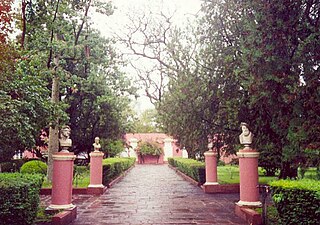 W
WThe San José Palace is the former personal residence of Justo José de Urquiza, Argentine caudillo, general, politician and President of the Argentine Confederation from 1854 to 1860. The Palace is now the setting of the Justo José de Urquiza Museum and National Monument.
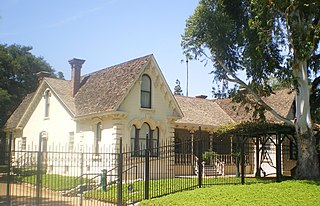 W
WThe Workman and Temple Family Homestead Museum is a historic house museum located at 15415 East Don Julian Road in City of Industry, California, that features the homes and private cemetery that belonged to the pioneer Workman-Temple family.